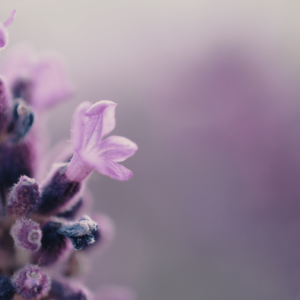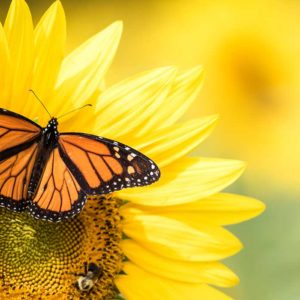Can You Find These 6 Things in Your Nearby Nature?
Family neighbourhood walks can be a great way to rediscover the nature in your backyard. Many cities in Canada have limited access to parks and other large greenspaces in order to reduce the spread of COVID-19 and flatten the curve—as a result, we challenge you to find the sights below on the streets around your home.
Blooming Spring Flowers
Life begins to return to local green patches and gardens come spring. Crocuses, tulips, and daffodils are the most recognizable spring flowers, and their colourful petals brighten up any lawn. No need to go to the park—many of these blooms peek out of residential garden beds.
While these three flowers are different in appearance, they share an important commonality: they grow from a bulb instead of a seed. Bulb flowers are perennials, meaning they can grow for multiple years without the need for replanting. This is the opposite to annual flowers which, as the name suggests, last only one year.
How many types of flowers can you find in your nearby nature? What shade are the petals? Do you think they grow from bulbs or seeds?
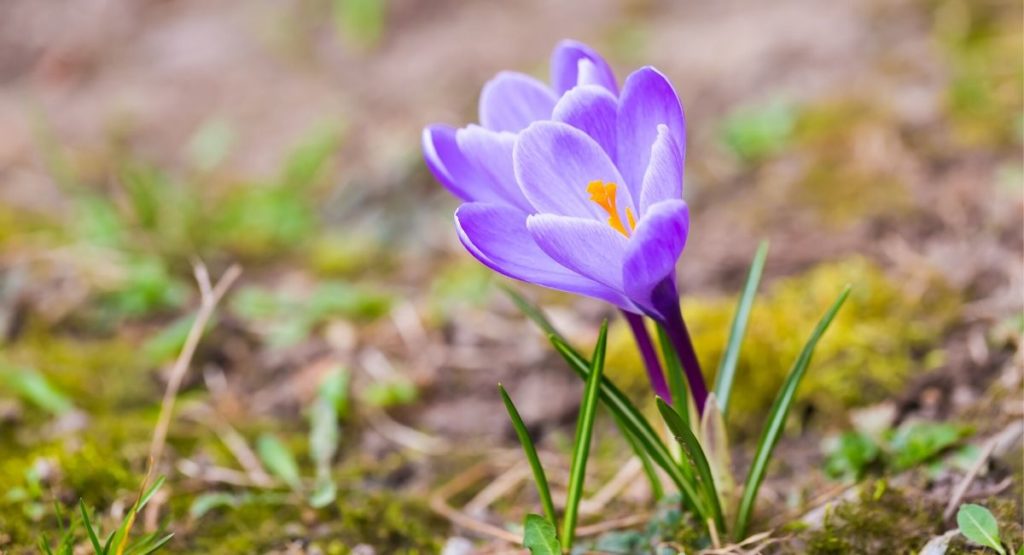
Migratory Birds Returning for Spring
Nearby nature provides all sorts of delights, and the spring arrival of migratory birds means that what you’re seeing will change week by week. Monitoring for returning bird species is the perfect activity whether you’re strolling down the street or watching from your window. April and May are exciting months to be a bird watcher.
“Migration generally proceeds in waves depending on where you live in Canada and how fast winter recedes,” says Ted Cheskey, Nature Canada’s Naturalist Director. “Robins and blackbirds are amongst the earliest songbirds, arriving as the snow recedes from mid-February to April. Early in April, the first swallows can arrive along with sparrows, and ‘hearty species.’ By late April, the first warblers show up, and May brings the arrival of smaller, largely insectivorous species like the warblers, flycatchers, orioles, and tanagers.”
While we certainly recommend a visit to your local bird sanctuary in the future, residential streets and nearby parks provide ample opportunity to spot new feathered friends. How many species can you find?
Colourful Street Art
Street art typically involves wall murals painted by trained artists. Lately, however, crafty kids have turned windows, doors, and sidewalks into an outdoor art gallery. While we’ve seen a lot of art related to St. Patrick’s Day, Easter, and Passover, there’s plenty of seasonal drawings around to keep you on the lookout. Bonus points if you and your family can spot some nature-themed artwork!
Interested in having your little artists add to the gallery display? The Canadian Museum of Nature has a number of nature-themed colouring pages on its website, including a set of drawings featuring Arctic animals.
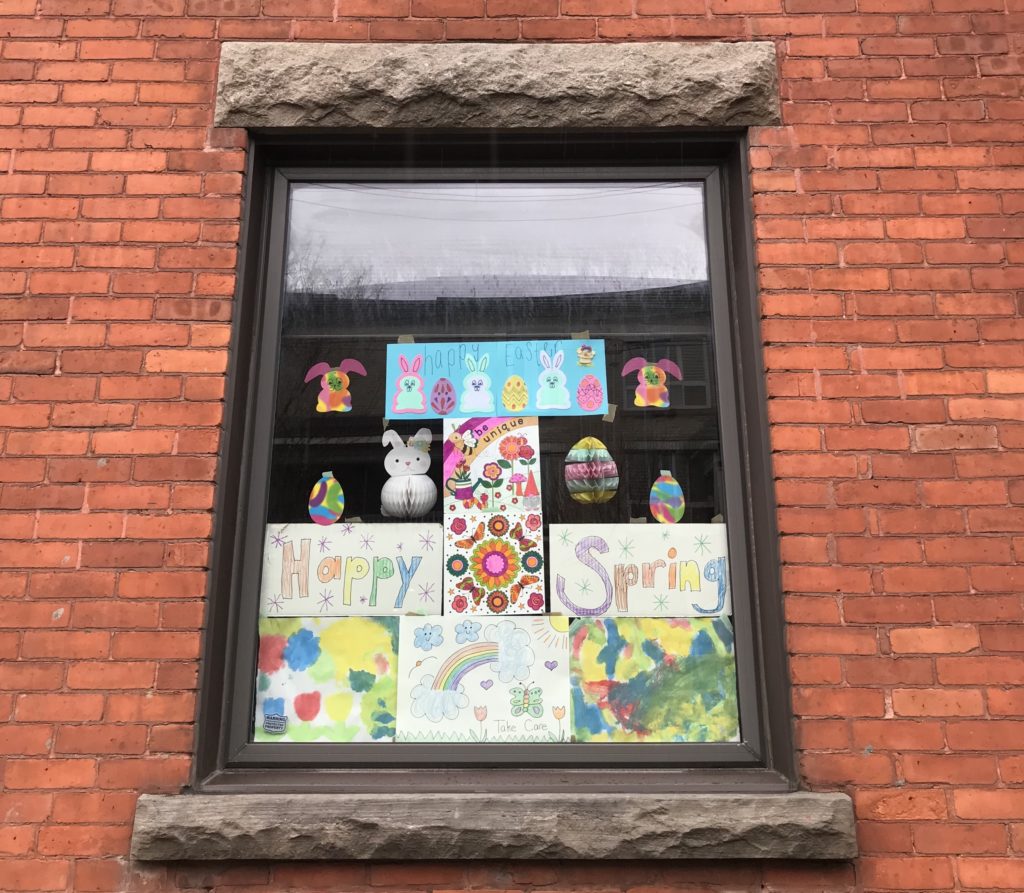
New Tree Buds
This past month has seen us trade in-person friendships for virtual ones, but that doesn’t mean you can’t try and find new buds! Tree buds, that is. Buds are the precursor to leaves, and spring offers a small and precious window of time when we can spot them on branches. Each tree bud is a unique shape, colour, and size, and the Forest Academy has some advice on what to look for when searching for buds in your nearby nature.
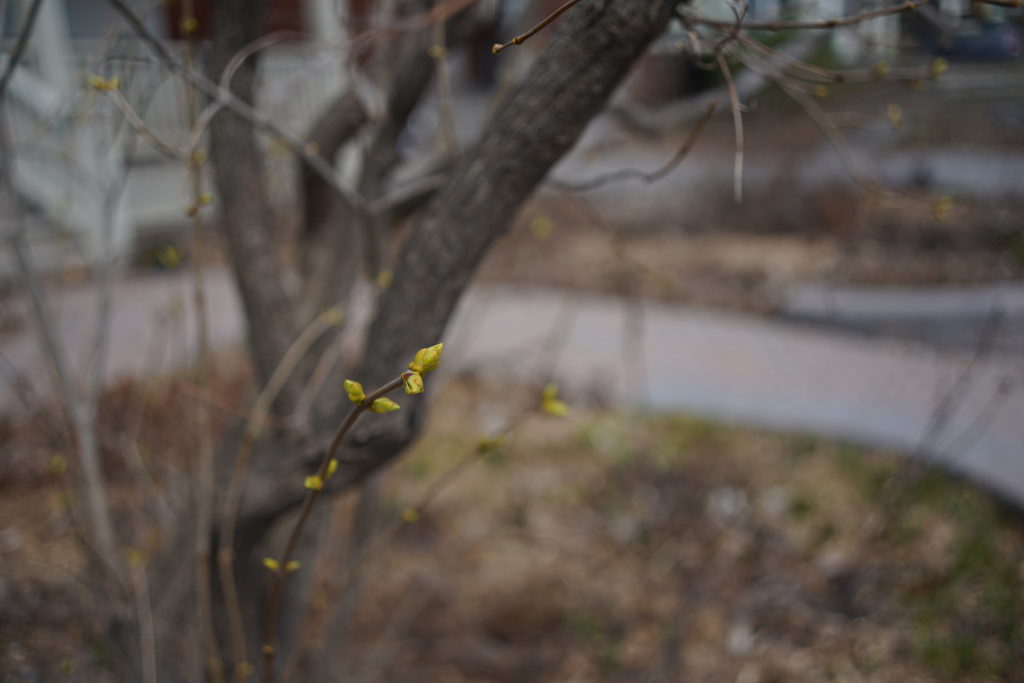
Different Types of Clouds
We’ve never had more time for a little recreational cloud-watching. All of the classic games persist: try and find shapes in the clouds, and challenge yourself or your child to sketch what they see. The Weather Network has a primer on the most common clouds to spot in the spring for those who are curious about the science behind what’s in the sky.
Animal Tracks
Spring thaw can be synonymous with mud which, while messy, is ideal for spotting animal tracks (other good spots include sandy areas and the ground next to bodies of water). This guide recommends looking for tracks at the place where one type of ecosystem bumps up against another—the edge of a nearby ravine, swamp, or lake, for example. Similar to cloud-watching, try drawing what you find and look it up later once home. Here are a few of common tracks you may come across in your nearby nature.
Bonus: The Other Gems in Your Neighbourhood
The things you come across in your nearby nature will be unique to your city. Here in Ottawa, one of our team members appreciated some bird-themed poetry that was affixed to local hydro poles. We’re inspired by the community efforts we see during this time, and you should definitely watch for these on your walk!
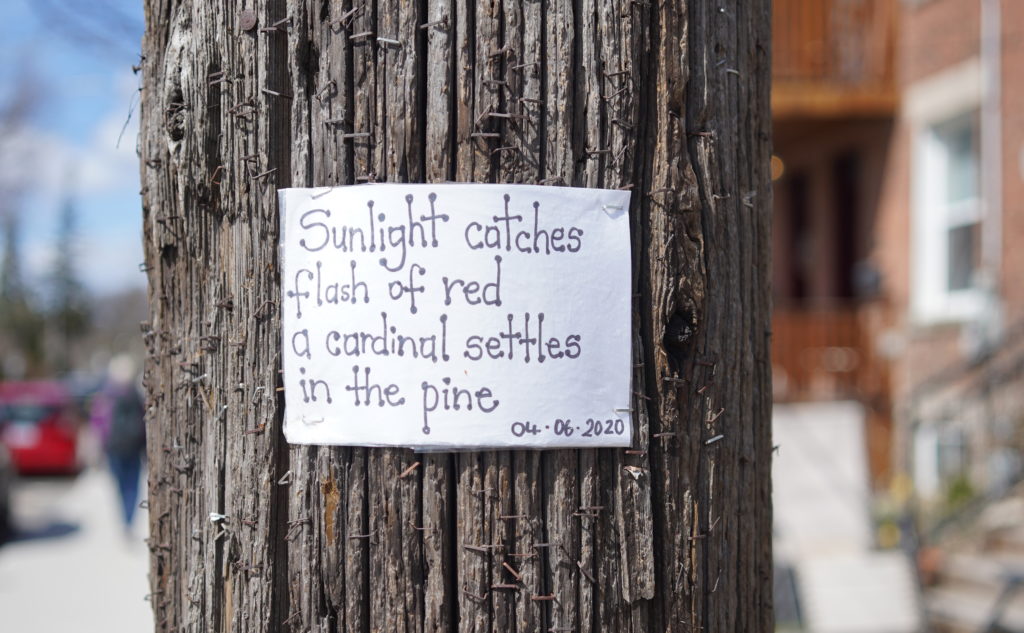
Want to record what you’re finding along the way? Check out our guide on how to nature journal the signs of spring. Otherwise, you can print out the graphic below and keep track of the progress you’re making on this mini nearby nature scavenger hunt. Enjoy your walk!
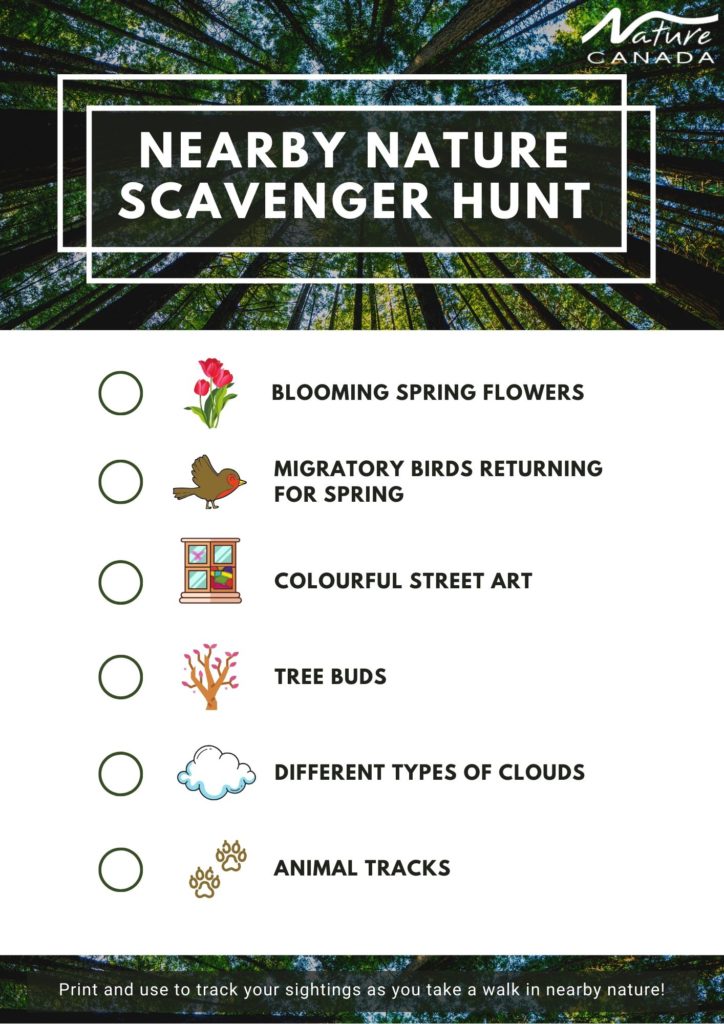
Nature Canada thanks the frontline medical workers for their efforts during this time. We follow the advice of the World Health Organization and Health Canada. Please visit these two websites for the latest information on how to protect you and your family from COVID-19.
Nature is also important to our health and well-being and we hope you’ll consider supporting our efforts to save nature. Thank you for caring!
Yours in nature, the Nature Canada team.








